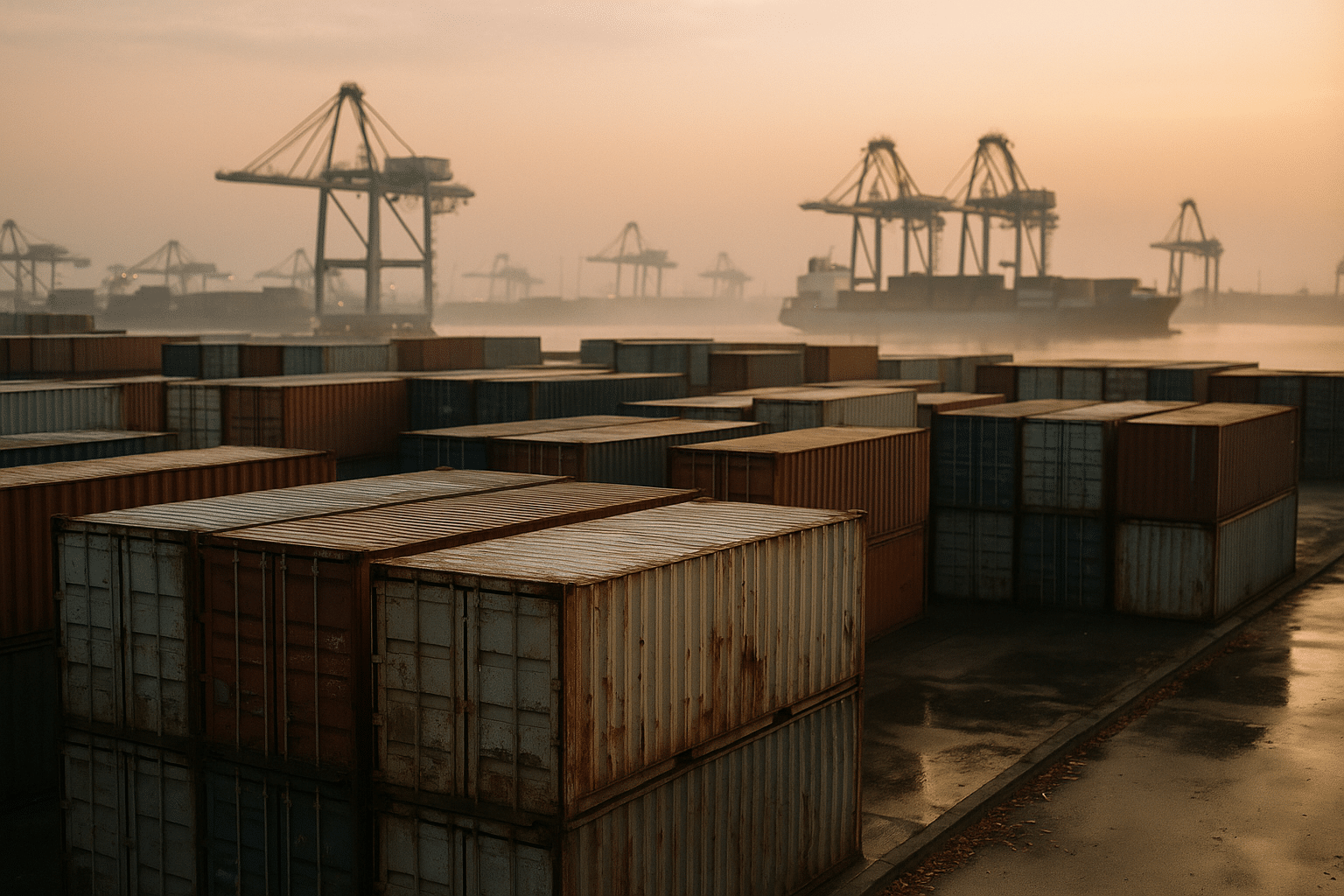
Exploring Economy: Global economic trends and forecasts.
Outline
– Why global trends matter to everyday finances
– Inflation, interest-rate cycles, and what they mean for borrowing and saving
– Jobs, wages, demographics, and technology’s shifting frontier
– Energy, commodities, and the climate transition’s price signals
– Trade, supply chains, currencies, and scenario-based forecasts for the year ahead
Why Global Trends Matter to Your Wallet
Finance can feel abstract until it shows up in the grocery aisle, the rent bill, or the rate on a student loan. Global economic trends are the invisible currents behind those very visible costs. When growth accelerates, businesses hire, wages may climb, and investors feel more confident. When growth slows, households may tighten budgets, and lenders raise the bar for credit. Understanding the big picture isn’t a luxury for specialists—it’s a practical lens for families, freelancers, and business owners alike.
Consider three everyday links between the world economy and daily decisions:
– Borrowing costs: When policy rates rise to cool inflation, the cost of mortgages, auto loans, and credit cards often increases. Even small changes can reshape monthly budgets over a multi‑year loan.
– Prices at the register: Global demand, shipping bottlenecks, and commodity swings flow into food, energy, and durable goods prices. A drought halfway around the world can nudge your breakfast bill higher.
– Job stability and pay: When companies anticipate stronger demand, they expand and invest, supporting employment and wage growth. In downturns, hiring freezes and slower raises can follow.
The early 2020s illustrated these linkages vividly. A rapid rebound in demand collided with supply constraints, lifting inflation in many regions to multi‑decade highs. Central banks responded by raising policy rates aggressively. The ripple effects were visible everywhere: higher yields on savings accounts, more expensive mortgages, recalibrated valuations in equities and real estate, and renewed attention to budgeting.
Why does monitoring global trends matter now? Because the next phase often differs from the last. Inflation has moderated in many economies compared with its peak, yet remains above long‑term targets in some places. Policy makers face a careful balance: reduce inflation further without stalling growth. Meanwhile, structural shifts—aging populations, digitalization, and the energy transition—are altering long‑run growth and investment patterns.
By staying attuned to these currents, households can time big purchases more thoughtfully, businesses can plan inventories and hiring with greater resilience, and long‑term investors can align portfolios with evolving risks and opportunities. The lesson is not to predict with certainty, but to prepare with clarity.
Inflation, Interest-Rate Cycles, and the Cost of Money
Inflation is the rate at which the general price level rises. It is shaped by demand (how much people and firms want to buy), supply (how easily goods and services can be produced and delivered), and expectations (what people believe prices will do next). When inflation runs high, wages often try to catch up, central banks raise policy rates to cool demand, and real (inflation‑adjusted) incomes can feel squeezed.
Monetary policy operates with a lag—often 6 to 18 months—so the effects of rate hikes or cuts unfold over time. In the recent cycle, policy rates in many large economies rose to levels not seen in over a decade. As those higher rates filtered through, borrowing slowed, housing cooled in several regions, and savings vehicles offered yields many savers had not seen for years.
Key mechanics to watch:
– Transmission channels: Higher policy rates lift bank lending rates, pressurize asset valuations, and strengthen currencies, which can lower import prices but weigh on exports.
– Yield curve signals: When short‑term rates exceed long‑term rates, it can signal tighter conditions and caution about future growth. Normalization—where long rates exceed short rates—often follows as inflation pressure eases.
– Sticky vs. transitory components: Energy and food prices can swing rapidly, but services inflation—linked to wages and rents—often changes more slowly. Progress on services inflation tends to be gradual.
What does this imply for the year ahead? Many forecasters anticipate further disinflation compared with the peak years, though the path is uneven across regions. Services categories remain firm in places with tight labor markets, and shelter costs can lag. The most likely policy path in several advanced economies is a gradual shift from restrictive rates toward more neutral settings if inflation continues to cool. However, surprise shocks—commodity spikes, geopolitical tensions, or persistent wage pressures—could slow that transition.
Practical takeaways:
– If you carry variable‑rate debt, consider stress‑testing your budget for rate moves in either direction.
– Savers may still find comparatively attractive yields in short‑dated instruments when policy remains tight; locking in longer maturities warrants weighing reinvestment risk against potential rate changes.
– Homebuyers can compare fixed and adjustable options with scenario analysis. A modest difference in rates can translate into meaningful lifetime interest costs.
In short, the cost of money is set globally as much as locally. Keeping an eye on inflation dynamics and the policy trajectory can help you make steadier borrowing and saving choices.
Jobs, Wages, Demographics, and Technology’s Shifting Frontier
Labor markets are the backbone of household income and consumer demand. In many economies, unemployment has remained relatively low compared with historical averages, even as growth slowed from its post‑pandemic surge. Wage growth has been firm in sectors facing persistent shortages—healthcare, skilled trades, and specific technical roles—while other industries have seen normalization as hiring cooled.
Three structural forces are shaping the next decade:
– Aging populations: In several advanced and middle‑income economies, fertility rates are below replacement and the median age is rising. This dynamic can constrain labor force growth, potentially lifting the “neutral” interest rate and supporting wage floors in affected sectors.
– Migration and participation: Migration flows and policies strongly influence labor supply. Meanwhile, higher participation among older workers and underrepresented groups can counterbalance demographic headwinds, raising potential output.
– Technology and productivity: Automation, artificial intelligence, and advanced software tools can amplify productivity, especially when paired with reskilling. Firms that successfully integrate these tools often see higher output per worker, improved margins, and more resilient operations.
Wage dynamics are nuanced. In tight labor markets, starting salaries and retention bonuses can rise quickly; yet real purchasing power depends on inflation. As inflation moderates, steady nominal wage growth can translate into improving real incomes. For households, that means careful attention to both paychecks and prices. For businesses, it means aligning compensation strategies with productivity gains to maintain competitiveness.
Practical implications:
– For workers: Invest in adaptable skills—data literacy, critical thinking, and domain expertise. Consider credentials that signal proficiency in emerging tools. A portfolio of skills can buffer against industry‑specific slowdowns.
– For employers: Build training pipelines and cross‑functional roles that allow talent to move where demand is strongest. Automation is most effective when it complements—not replaces—human judgment.
– For policymakers and communities: Childcare access, lifelong learning, and mobility infrastructure help unlock untapped labor supply. These levers can lift long‑run growth without stoking inflation.
Looking ahead, productivity is the quiet engine of sustainable wage gains and broad prosperity. If investment in technology and human capital holds up, potential growth can remain resilient even as the workforce ages. The distribution of those gains will hinge on education, geographic mobility, and how effectively institutions support transitions between declining and expanding sectors.
Energy, Commodities, and the Climate Transition’s Price Signals
Energy and raw materials sit at the crossroads of inflation, growth, and geopolitics. The past few years reminded the world how quickly commodity prices can reprice when supply is constrained. Fuel costs ripple into transportation, manufacturing, agriculture, and ultimately into household budgets. Meanwhile, the climate transition is reshaping investment flows and cost curves across power generation, transport, and heavy industry.
Several trends are worth tracking:
– Volatile inputs: Weather events, logistics disruptions, and policy shifts can move oil, gas, and agricultural benchmarks sharply. Price spikes typically pass through to consumers with lags, depending on subsidies, taxes, and contracts.
– Transition investment: Global spending on clean power, storage, and electrification has grown markedly in the early 2020s, reaching well over a trillion dollars annually. Grid upgrades and storage projects are critical to integrating variable renewables.
– Critical minerals: Batteries, turbines, and power electronics depend on minerals such as lithium, nickel, and rare earth elements. Concentrated supply chains can lead to price swings and strategic stockpiling.
– Efficiency momentum: From heat pumps to improved building envelopes, efficiency lowers demand per unit of output and can cushion households against fuel volatility.
What does this mean for prices? In the near term, commodity markets can be whipsawed by short‑run shocks. Over the medium term, scaling low‑carbon technologies often reduces operating costs, but requires substantial upfront capital and resilient supply chains. Electricity systems may face periods of tight capacity until transmission and storage catch up, keeping power prices sensitive to weather and demand surges.
Implications:
– Households can prioritize efficiency upgrades with clear payback periods—insulation, smart thermostats, and efficient appliances—reducing exposure to energy price swings.
– Businesses can evaluate on‑site generation, long‑term supply contracts, and diversified sourcing for key inputs. Hedging policies should be aligned with cash‑flow needs rather than short‑term market timing.
– Investors may consider how project pipelines, permitting timelines, and mineral supply diversification affect the pace and cost of the transition. Regional policies will influence where capital is deployed and how quickly new capacity comes online.
The climate transition is not a straight line. It is a path with detours, learning curves, and scaling gains. Price signals during this journey will guide innovation, efficiency, and the mix of energy sources that power the next chapter of global growth.
Trade, Supply Chains, Currencies—and What to Watch Ahead
Globalization is evolving rather than ending. After pandemic‑era upheavals, firms have diversified suppliers, added inventory buffers, and explored “near‑shoring” and “friend‑shoring” where it makes strategic sense. Shipping networks have adapted to route changes and intermittent bottlenecks. While these adjustments can add costs in the short run, they often increase resilience and reduce the risk of severe disruptions.
Currencies are another key transmission channel. When a major currency strengthens, it can lower import prices for that economy but raise borrowing costs for others with foreign‑currency debt. Exporters may adjust pricing or production in response to exchange‑rate shifts, while travelers notice the effect immediately in hotels and meals. Over the medium term, currency cycles tend to reflect differences in growth, inflation, interest rates, and risk appetite.
Signals to monitor in the coming 12–18 months:
– Shipping and freight rates: Persistent elevation often hints at supply constraints or rerouting pressures; normalization signals healing capacity.
– Inventory‑to‑sales ratios: Rising ratios can precede discounting and softer production, while tight inventories may foreshadow restocking demand.
– Policy coordination: Trade rules, tariffs, and industrial policies shape investment destinations and the relative costs of key technologies.
Baseline outlook and scenarios:
– Base case: Global growth hovering near its long‑run average—roughly in the 2.5%–3% range—accompanied by gradual disinflation in many regions. Policy rates ease cautiously if inflation continues to recede.
– Upside: Faster productivity gains from technology adoption and smoother energy markets lift real incomes and investment, nudging growth higher.
– Downside: A commodity shock, renewed supply bottlenecks, or sticky services inflation delays policy easing and dampens consumption and capex.
What can decision‑makers do?
– Households: Build emergency cushions that cover a few months of expenses; ladder maturities for savings to manage reinvestment risk; time major purchases with rate and price trends in mind.
– Small and mid‑size firms: Stress‑test cash flows under slower demand and higher input costs; diversify suppliers where practical; maintain flexible financing to navigate rate transitions.
– Long‑term investors: Revisit asset allocation with a focus on inflation sensitivity, income durability, and regional diversification; consider that past decade dynamics (ultra‑low rates, subdued inflation) may not fully define the next one.
Conclusion—Turning Forecasts into Action: Forecasts are guides, not guarantees. The most resilient plans acknowledge uncertainty and build in margins of safety. By watching the signposts—labor markets, inflation trends, energy prices, freight costs, and policy direction—you can translate global signals into practical steps. The goal is steady progress: thoughtful budgeting, disciplined investing, and adaptable operations that can navigate both headwinds and tailwinds in the world economy.


